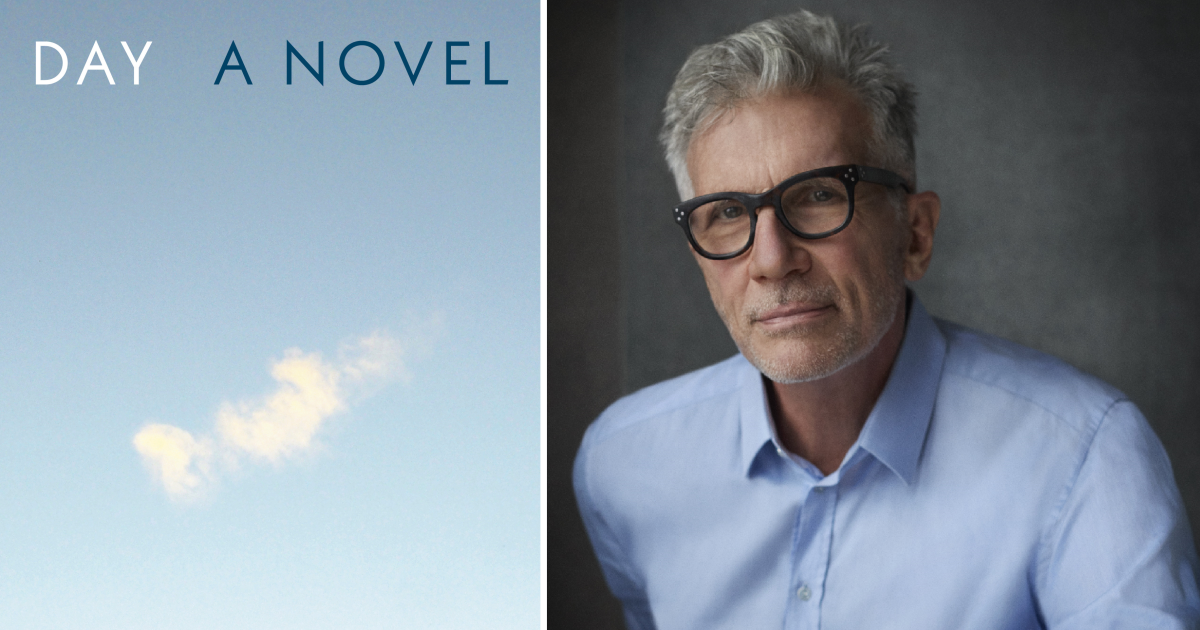Author Michael Cunningham first rose to prominence following the release of his 1998 novel “The Hours.” The story follows three women and their lives over the course of a singular day; it won Cunningham the Pulitzer Prize in 1999 and was turned into a highly acclaimed film. In his latest novel, “Day,” Cunningham returns to the one-day structure, looking at three disparate days over the course of three years. Cunningham recently joined GBH Executive Arts Editor Jared Bowen for a discussion on the novel, as well as his writing process and experience working with the Provincetown Fine Arts Work Center.
While Cunningham says that “it was not my intention after ‘The Hours’ to set up some kind of ongoing cottage industry involving novels that take place in a single day,” citing the intermittent novels he’s released that don’t follow this structure, there are a number of parallels between Cunningham’s most famous work and this most recent release. The writings of Virginia Woolf “haunt” “The Hours,” as Bowen describes it, and similarly the pandemic looms in “Day,” influencing the characters’ lives much like it did everyone’s in 2020.
Cunningham didn’t originally intend to write a novel about the pandemic, but “it seemed impossible to continue [writing] as if there was no pandemic. It would have been a little bit like writing about London in World War II without mentioning the Blitz.” So he scrapped the novel idea he had been working on and transitioned into writing what would become “Day.”
The primary characters of “Day” are Isabel, her brother Robbie, and her husband Dan. The three days shown in the novel — April 5 of 2019, 2020 and 2021 — reflect how their lives grow and change over the course of the pandemic. “Under the surface, though I think visible,” says Cunningham, “is really the fact that both Isabel, Robbie’s sister, and Dan, Isabel’s husband, are in love with Robbie. He represents this sort of ideal that plays differently for both of them. … So there they are, the three of them trying to manage as best they can.”
In the beginning of the novel, the pandemic hasn’t started yet. Cunningham says that in this first section of the book “we are seeing them work their way through their very complicated relationships. In the second part, in the ‘Afternoon,’ is a year later during the pandemic. And things change enormously, but people don’t so much.”
Writing about these characters is, for Cunningham, an exercise in acting. “I have actor friends, and what they do, just to get into a character, is very similar to what I do,” he said. “I really focus initially on the physicality of the person. Not only what would they look like, but how do they stand? How do they walk? What is the sort of tone of their voice?” While ultimately a majority of this information is left out of the finished novel, “you can start from the outside and sort of find your way in” to their personas this way, according to Cunningham.
Cunningham also has a special local connection as a board member at the Fine Arts Work Center in Provincetown. He was a fellow with the program more than 40 years ago, participating in the longstanding program that provides housing and a stipend for emerging writers, poets and visual artists to hone their craft from October to May. Cunningham says that “most young writers, certainly me and I think a lot of new writers, are doing it in isolation, feeling increasingly insane for doing it at all. For many of us, this is our first entry into a world in which what you’re doing is taken seriously.”
The landscape and experience of the Cape in its off-season, according to Cunningham, is “distinctly magical. … It’s this sort of sand bar at the very end of Cape Cod, it’s not on the way to anything else. It’s all sand; it’s all dunes and little dwarf trees.” He distinctly remembers “lots of long walks on soggy beaches” during his time as a fellow.
To Cunningham, the Fine Arts Work Center is one of a kind.
“It doesn’t require any kind of publishing track record,” he explained. “It probably, if anything, prefers that you are promising, of course, but really new at this. If there is anything even remotely like that, I’m unaware of it.”
You can listen to the entire interview above. “Day” is available November 14 via Random House.

